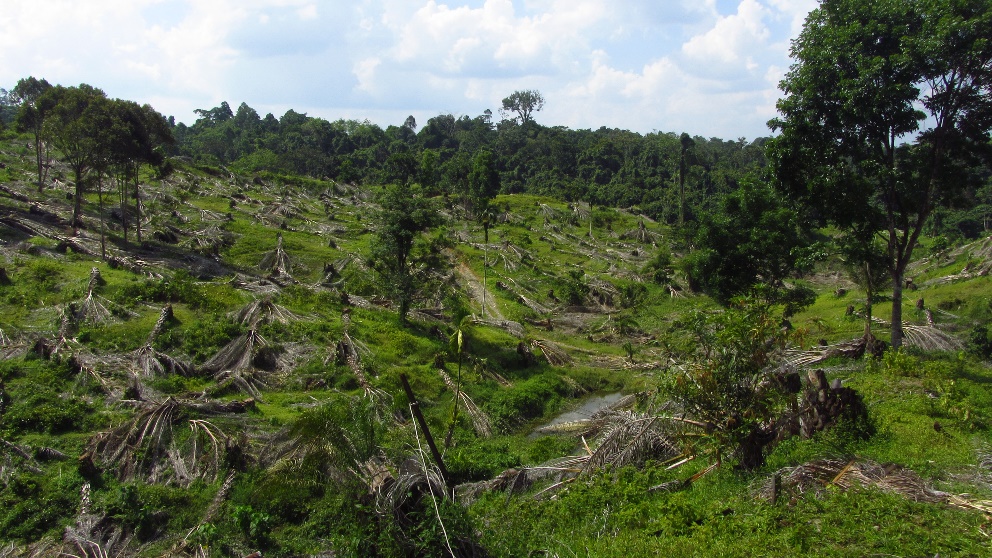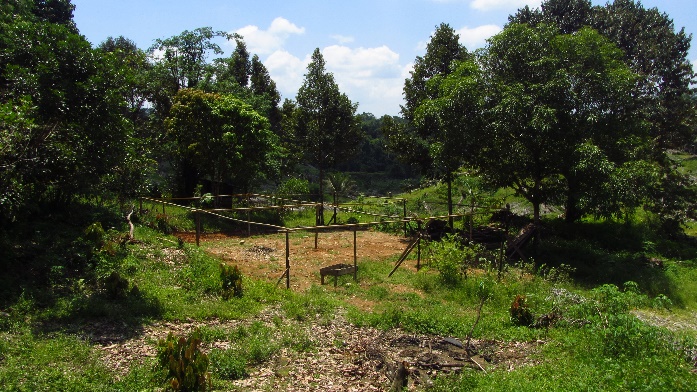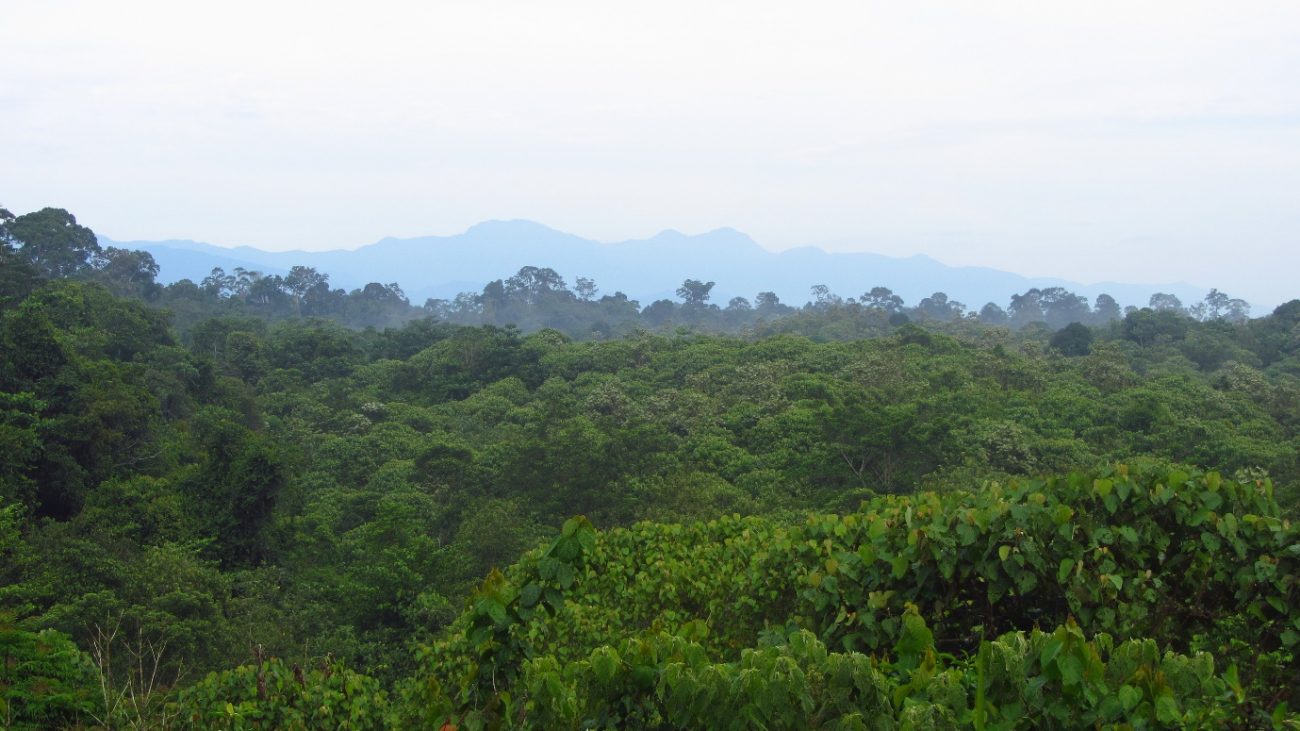Fabien Garnier, Programme Manager, reports
The team and I left Medan at 7 am on Tuesday morning. Initially we made good progress, but from Stabat to Cinta Raja, the journey was through oil palm plantations covering thousands of hectares. Our off-road van was essential on these dirty, muddy and chaotic plantation tracks. Around 12pm, we finally reached Cinta Raja restoration site and its cabin, where the 4 restoration field workers have been living since the beginning of the project a month ago. Finally, at the end of the road, the Gunung Leuser national park!
The team seemed in good health and we could see the restoration buildings taking shape: the 2 storey cabin was strong and would protect the team from bad weather, storms and wild elephants. The field workers had already started to build the nursery, with a capacity of 30,000 seedlings. We had brought mattresses with us, as well as kitchen equipment. The first task was to fix the water pump and tend the area around the cabin. The next step was installing solar panels to provide electricity.



